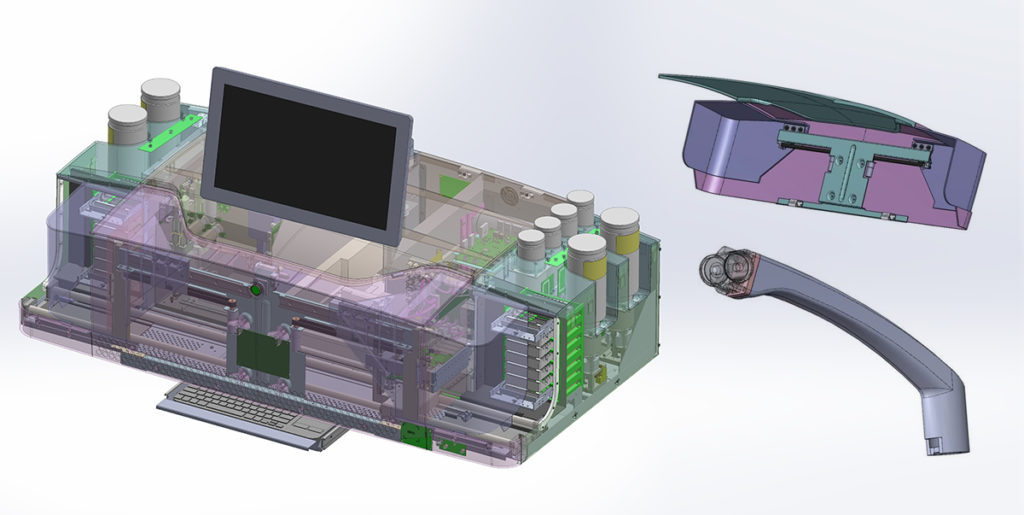Dysprosium: The Rare Earth Element Disrupting The EV Industry

Table of Contents
The Crucial Role of Dysprosium in Electric Vehicle Motors
Dysprosium's importance lies in its contribution to the creation of high-performance neodymium magnets, the heart of most electric vehicle motors. These permanent magnets are essential for generating the torque and power density needed for efficient and effective EV performance. Neodymium magnets, without the addition of dysprosium, wouldn't be nearly as effective.
- Dysprosium improves the temperature resistance of neodymium magnets: Electric motors generate significant heat during operation. Dysprosium enhances the thermal stability of these magnets, preventing significant performance degradation even under high-temperature conditions. This is crucial for maintaining optimal motor efficiency and extending the lifespan of the EV.
- Stronger magnets lead to smaller and lighter motors: The superior magnetic properties imparted by dysprosium allow for the creation of stronger, yet more compact, magnets. This translates directly to smaller and lighter electric motors, improving the overall efficiency of the vehicle and extending its range.
- Higher power density allows for more compact and powerful electric motors: The increased power density achievable with dysprosium-enhanced neodymium magnets allows for the design of more powerful motors within a smaller physical footprint. This is particularly beneficial in electric vehicles where space is at a premium.
The Geopolitical Landscape of Dysprosium Supply
The global supply of dysprosium is heavily concentrated, raising significant geopolitical concerns. China currently dominates the rare earth market, including the mining and processing of dysprosium. This concentration creates a significant vulnerability in the EV supply chain.
- China's dominance in the rare earth market: China controls a disproportionately large share of the global rare earth mining and processing capacity, giving it considerable leverage over the supply of dysprosium and other critical materials.
- Dependence on a single source creates risks for stable EV manufacturing: This dependence creates significant risks for EV manufacturers, making them vulnerable to price fluctuations, supply disruptions, and geopolitical tensions. Any instability in China's political or economic landscape could directly impact global EV production.
- Geopolitical tensions can significantly impact dysprosium prices and availability: International relations and trade policies play a substantial role in the availability and cost of dysprosium. Escalating geopolitical tensions could lead to price spikes and shortages, potentially hindering EV adoption.
Sustainable Sourcing and Recycling of Dysprosium
The environmental impact of dysprosium mining is a growing concern. Traditional mining practices can lead to habitat destruction, water pollution, and other environmental problems. Sustainable sourcing and recycling are therefore paramount to mitigate these negative consequences.
- Mining dysprosium can have significant environmental impacts: The extraction and processing of dysprosium require significant energy and resources, resulting in environmental damage if not managed responsibly.
- Recycling dysprosium from EV batteries is crucial for resource efficiency and environmental protection: Recycling end-of-life EV batteries and other dysprosium-containing products is essential for recovering valuable resources and reducing the environmental burden of new mining operations.
- Investment in research and development for improved recycling technologies is essential: Improving the efficiency and cost-effectiveness of dysprosium recycling technologies is critical for making this a viable and scalable solution.
Alternatives and Future Directions for Dysprosium in EVs
The reliance on dysprosium poses a risk to the long-term sustainability and security of the EV industry. Therefore, research into alternative materials and magnet designs is crucial.
- Research is underway to develop magnets with reduced or no dysprosium content: Scientists and engineers are actively exploring alternative materials and compositions for permanent magnets to reduce or eliminate the need for dysprosium.
- Exploring alternative magnet designs could potentially lessen the demand for dysprosium: Innovative magnet designs could improve efficiency and reduce the overall amount of rare earth elements needed for high-performance EV motors.
- Innovation in material science offers a path toward more sustainable and secure EV technologies: Continued investment in materials science research is vital to finding more sustainable and geopolitically stable solutions for EV motor technology.
Conclusion
Dysprosium's critical role in the EV revolution is undeniable, but its limited and geographically concentrated supply presents significant challenges. The need for sustainable mining practices, robust recycling infrastructure, and innovative material science is paramount to ensure the long-term success of electric vehicles. The geopolitical implications of dysprosium's scarcity cannot be ignored. We need diversified supply chains, investment in recycling technologies, and a continued push for innovation to secure a future where electric vehicles are truly sustainable and accessible. Learn more about the critical role of dysprosium and other rare earth elements in the transition to electric mobility and support research and development efforts aimed at building a more secure and sustainable future for the EV industry. The future of electric vehicles, in part, depends on responsible management of dysprosium and other critical materials.

Featured Posts
-
 Navigating The Difficulties Of Domestic Product Creation
Apr 29, 2025
Navigating The Difficulties Of Domestic Product Creation
Apr 29, 2025 -
 Bundesliga Lask Und Klagenfurt Kaempfen Ums Ueberleben
Apr 29, 2025
Bundesliga Lask Und Klagenfurt Kaempfen Ums Ueberleben
Apr 29, 2025 -
 Your Guide To Getting Capital Summertime Ball 2025 Tickets
Apr 29, 2025
Your Guide To Getting Capital Summertime Ball 2025 Tickets
Apr 29, 2025 -
 Canada Election 2023 Mark Carneys Faltering Campaign Momentum
Apr 29, 2025
Canada Election 2023 Mark Carneys Faltering Campaign Momentum
Apr 29, 2025 -
 Large Scale Trans Rights Protest Draws 20 000 Participants
Apr 29, 2025
Large Scale Trans Rights Protest Draws 20 000 Participants
Apr 29, 2025
